Climate change is a major issue of our times. Concern is affecting environmental, energy, and economic policy decisions. Many politicians are under the mistaken belief that legislation and regulation can significantly mold our climate to forestall any deviation from “normal” and save us from a perceived crisis. This post is intended as a primer for politicians so they can cut through the hype and compare real observational data against the flawed model prognostications.
The information below is gleaned from the scientific literature. The data show that the current warming is not unusual, but part of a natural cycle; that greenhouse gases, other than water vapor, are not significant drivers of climate; that human emissions of carbon dioxide are insignificant when compared to natural emissions of greenhouse gases; and that many predictions by climate modelers and hyped by the media are simply wrong. In spite of all the scary scenarios published, there is no physical evidence showing that human carbon dioxide emissions have a significant effect on global temperature. Carbon dioxide is vital to life on earth and current atmospheric levels are just barely above the minimum required for plant life. Political schemes to cut greenhouse gases will have no measurable effect on temperature but will greatly harm the economy by impeding energy production and use.
The Current Warm Period Is Not Unusual
The graph below, based on reconstruction from the geologic and historical records, shows that there have been several warm/cold cycles since the end of the last glacial epoch. The temperature during the Holocene Climate Optimum and Roman warm period was 3ºF to 10ºF warmer than today in many areas. This is warmer than the extreme scenarios of the IPCC. Clearly, current temperatures are neither unprecedented nor unusually warm. Life and civilization flourished during warm periods.
Looking at the broader geologic record, we see that there is little correlation between temperature and carbon dioxide.
Note that there was an ice age at the end of the Ordovician Period when atmospheric CO2 was approximately 4,500 ppm, or more than 11 times the current level. Notice also that the “normal” temperature of this planet is 22̊C, or about 18̊F warmer than it is now.
Al Gore liked to show a graph of the Vostok ice cores from Antarctica which shows a correlation between temperatures and CO2.
But what Gore didn’t tell you is that changes in temperature preceded changes in CO2 by 800 to 1,300 years.. That’s because temperature controls carbon dioxide solubility in the oceans. Notice that the temperature cycles (the glacial epochs) occur in approximately 100,000-year intervals. This coincides with the precession of the Earth’s elliptical orbit around the Sun. (Can you think of anything that would make CO2 cycle this way if it were the driver rather than temperature?)
Why the Climate Models Are Wrong
The IPCC says that warming will produce more water vapor which will enhance greenhouse warming, a positive feedback. All their climate models are based on this assumption. Sounds reasonable except in the real world, it doesn’t happen. Increased water vapor produces more clouds which block the sun thereby inducing cooling, a negative feedback. For a more detailed explanation see my article “Carbon dioxide and the greenhouse effect.” That article also shows why your carbon footprint doesn’t matter and why government policy to reduce CO2 emissions will be ineffective.
According to climate models, the rate of warming should increase by 200-300% with altitude in the tropics, peaking at around 10 kilometers – a characteristic “fingerprint” for greenhouse warming. However, measurements by weather balloons and satellites show the opposite result: no increasing temperature trend with altitude. In other words, the model-predicted “fingerprint” of anthropogenic, greenhouse warming is absent in nature. The computer-predicted signature of greenhouse warming trends should look like the graph on the left below, but according to measurements from satellites and radiosondes, the actual temperature trend is as depicted in the graph on the right.
The models are demonstrably wrong as shown by Dr. Roy Spencer in his comparison of 73 model results versus reality, see his graph here and below.
The atmosphere is not static; we have weather which tends to dissipate heat into space. According to real world measurements, the negative feedbacks overwhelm the theoretical positive feedback posited by the IPCC.
The greenhouse model is a simplified story that helps explain how our atmosphere works. However, the real world is very complicated and still not fully understood. Even global warming alarmist James Hansen, formerly head of NASA’s Goddard Institute for Space Studies, had this to say: “The forcings that drive long-term climate change are not known with an accuracy sufficient to define future climate change.” — James Hansen, “Climate forcings in the Industrial era”, PNAS, Vol. 95, Issue 22, 12753-12758, October 27, 1998.
And even the IPCC once admitted, “In climate research and modeling, we should recognize that we are dealing with a coupled non-linear chaotic system, and therefore that the prediction of a specific future climate state is not possible.” — Final chapter, Draft TAR 2000 (Third Assessment Report), IPCC.
If all that weren’t enough, a recent study published by the American Meteorological Society (here) found that individual climate models produced different results when run on different computers, even though the models contained the same coding and input data. And we base expensive policy decisions on this?
Human Contribution to Greenhouse Gases Is Insignificant:
Human carbon dioxide emissions are 3% to 5% of total carbon dioxide emissions into the atmosphere, and about 98% of all carbon dioxide emissions are reabsorbed through the carbon cycle. http://www.eia.gov/oiaf/1605/archive/gg04rpt/pdf/tbl3.pdf.
Using data from the Department of Energy and the IPCC we can calculate the impact of our carbon dioxide emissions. The results of that calculation shows that if we stopped all U.S. emissions it could theoretically prevent a temperature rise of 0.003̊C per year. If every country totally stopped human emissions, we might forestall 0.01̊C of warming. For the derivation of these numbers, see my post “Your carbon footprint doesn’t matter.”
Although Earth’s atmosphere does have a “greenhouse effect” and carbon dioxide does have a limited hypothetical capacity to warm the atmosphere, there is no physical evidence showing that human carbon dioxide emissions actually produce any significant warming.
The major greenhouse gas is water vapor which accounts for about 97% of the warming effect. The other 3% is attributed to carbon dioxide, methane, CFCs etc. Since carbon dioxide produces less than 3% of the greenhouse effect, and humans produce less than 5% of the carbon dioxide, human carbon dioxide emissions represent about one tenth of one percent of the total greenhouse effect and are therefore insignificant.
The Sun Is the Real Climate Driver
The real drivers of climate are the Sun’s insolation (light and heat), its magnetic flux, and the relative position and orientation of the Earth to the Sun.
There are three main positional variations of the Earth and Sun, called Milankovitch cycles: Orbital Eccentricity, Axial Obliquity (tilt), and Precession of the Equinoxes. These cycles affect the amount and location of sunlight impinging on the earth.
The variations in the Sun’s magnetic flux controls the amount of cosmic rays impinging on the atmosphere. Cosmic rays ionize the atmosphere and the ions form nuclei for cloud formation. Cloud cover has a great effect on global temperature, but this area is still poorly understood and not addressed in climate models.
Should We Be Concerned with Sea Level Rise?
Climate alarmists put forth scary scenarios saying that global warming is causing unprecedented sea level rise and the rise is accelerating. Well, don’t sell your beach-front property yet. Since the end of the last glacial epoch 15,000 years ago, sea level has risen 120 meters, about one meter per century as we entered the current interglacial period. But since about 7,000 years ago, sea level rise has greatly slowed. NOAA puts normal rise at 1 to 3mm per year, about the thickness of a penny. Surely we can deal with that.
Based on geologic evidence, there has been no acceleration of sea level rise in response to increased temperature or CO2 levels for the last 6,000 years. Another study based on worldwide coastal tidal gauge records, shows that the rate of sea level rise is decreasing. Specifically, the mean rate of global sea level rise was “larger in the early part of the 20th century (2.03 ± 0.35 mm/yr 1904-1953), in comparison with the latter part (1.45 ± 0.34 mm/yr 1954-2003).”
The other thing you should realize about the rate of sea level rise is that it is cyclical. The rate accelerates and decelerates on approximately 11-year cycles which suggests that it is driven by solar variation. (Source: Holgate, S.J. 2007. On the decadal rates of sea level change during the twentieth century. Geophysical Research Letters 34: 10.1029/2006GL028492)
Ocean Acidification
We often hear that increasing carbon dioxide in the atmosphere will make the oceans too acidic and dissolve or otherwise harm carbonate-shelled marine fauna. These writers or reporters seem ignorant of the fact that marine fauna evolved when the atmospheric CO2 concentration was more than 10 times higher than the current level.
It has been estimated that current ocean pH is 0.1 pH unit less alkaline than it was in pre-industrial time, and some climate models predict a further decrease of 0.7 pH units by 2300. However, proxy reconstructions of ocean acidity, based on fossil and modern corals, show that ocean pH has oscillated between pH of 7.91 and 8.29 during the past 7,000 years. That is within the alkaline range (neutral is 7). That cyclic variation is nearly four times larger than the 0.1 decrease alarmists are whining about, and even if the model predicted decrease of 0.7 units occurs, the water will still be alkaline. Many studies show that corals and other marine life are able to adapt to the changing pH. The Center for the Study of Carbon Dioxide and Global Change has many articles and a large database addressing this issue here. They conclude there is no cause for alarm.
Extreme Weather
Storms, droughts, heat waves, hurricanes etc. happen, and although alarmists say that global warming is causing more of everything, the real data actually shows either a decline or no trend. See the graphs on Anthony Watts’ extreme weather page here. Also look at his U.S. climate history page here.
Problems with Surface Temperature Data
We are always hearing or reading proclamations that we just had the hottest week, month, year since…(it was cooler). Official surface temperature records have been corrupted by deliberate manipulation, by siting deficiencies, and by ignoring inconvenient data.
Meteorologist Anthony Watts documents many of these problems in a paper published last year. For an introduction and links to the paper see http://wattsupwiththat.com/2012/07/29/press-release-2/
I will give a local example of temperatures being influenced by the Urban Heat Island effect (UHI). The graph below shows the temperature records of Tucson and Tombstone from about 1885 to 2005. Both graphs show the warming from the “Little Ice Age” which ended about 1850. But the temperature record is very different since about 1900. Tucson shows warming from the UHI, but Tombstone shows a fairly constant temperature. Does the carbon dioxide induced greenhouse effect work only in Cities?
Conclusion
The basic conclusion from these data is that carbon dioxide has little effect on climate and all attempts to control carbon dioxide will be a futile exercise in climate control. All the dire predictions are based on flawed computer models. Carbon dioxide is a phantom menace.
No researchers nor the IPCC have presented any physical or observational evidence that CO2 is a significant driver of temperature.
Climate models are complex mathematical constructs. But the atmosphere is even more complex, so modelers must ignore many variables such as Sun-Earth relationships and clouds, in favor of a few basic parameters. The fundamental assumption of climate models is that changes in CO2 concentration drive temperature change, but evidence from geology and astronomy show that the relationship is just the opposite, temperature change drives CO2 concentration.
“The whole aim of practical politics is to keep the populace alarmed (and hence clamorous to be led to safety) by menacing it with an endless series of hobgoblins, all of them imaginary.” – H. L. Mencken
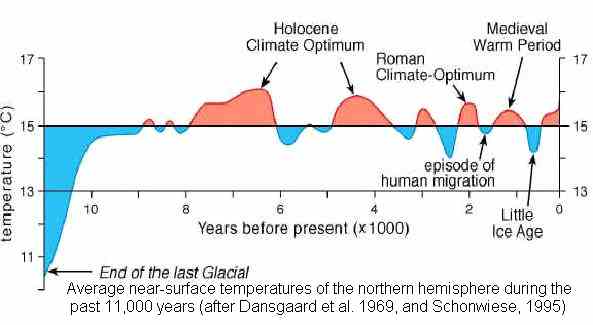
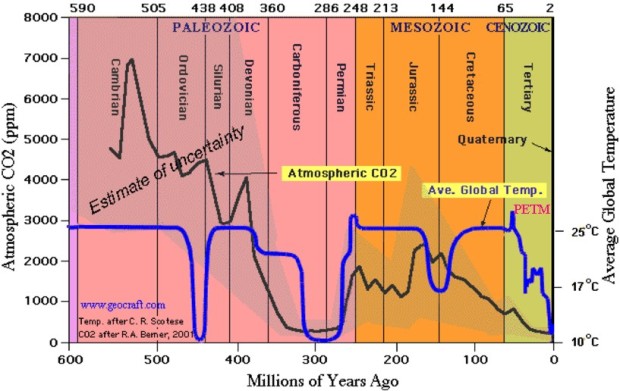
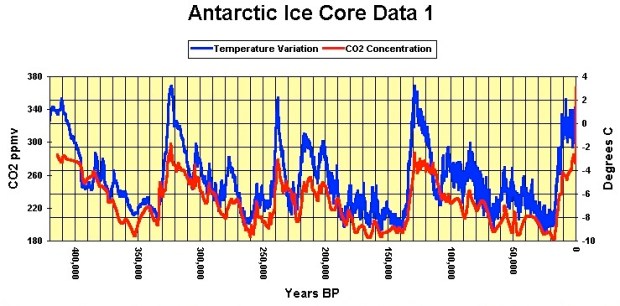

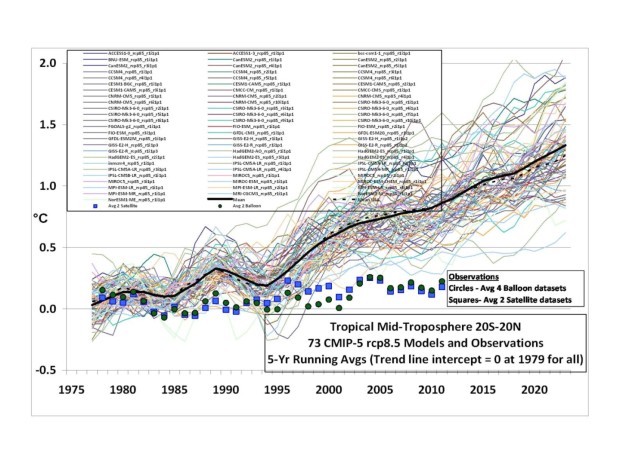
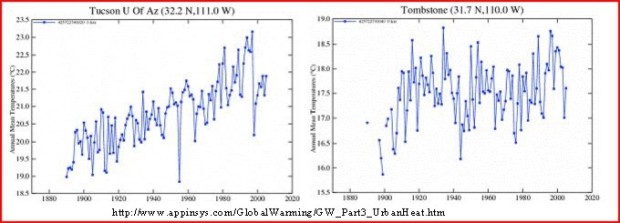
Reblogged this on The Grey Enigma.